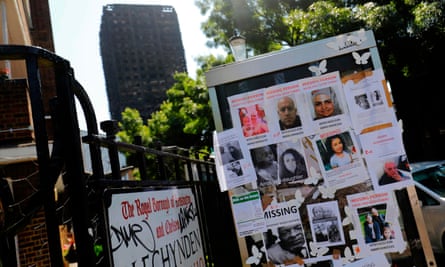What does your social circle look like? Think about your friends, family, colleagues: if you have a university degree, how many of your friends possess one as well? How many of your acquaintances earn a similar income to you? Consider the parents of your children’s school friends: how many of them drive similar cars and work in similar jobs?
Now check out your Facebook or Instagram feeds: do your friends and colleagues tend to go to the same restaurants, holiday in the same places, like the same things? For that matter, have you ever found the person in front of you in a queue reading the same book as you? (This happened to me recently ...)
You may well conclude that your social circle is not as diverse as you thought. If so, rest assured: you are not alone. There is evidence from both the US and Britain that our interactions increasingly tend to be with people similar to ourselves – and that we also fail to realise just how selective our perspectives on society are.
So what, you might ask. Is it necessarily bad if we interact mainly with like-minded people?
In fact, there are important reasons why we should be worried about this tendency towards increased social segregation – and not simply because it hinders mutual understanding and contributes to the division and polarisation of societies (as expressed in the votes for Donald Trump and Brexit).
Segregation also plays an important role in societies’ levels of economic inequality – firstly, due to “network effects”: rich people prosper not only because of their own high income, but also thanks to their affluent neighbourhoods and important connections. Similarly, much poorer people may be at a disadvantage not only because of their low incomes, but because of their often-deprived surroundings, inferior schools and lack of influential contacts. The recent Grenfell Tower fire seems a classic example of such residential segregation, where inhabitants’ concerns about fire safety were ignored because the people affected were not deemed “important” enough.

However, there is a second, indirect way in which segregation can affect inequality: social segregation can heighten misperceptions about the state of society, and thus affect citizens’ support for certain policies such as income redistribution and expansion of the welfare state. This can lead to an increase in (post-tax) income inequality.
Or, as the comedian Chris Rock put it in an interview with New York Magazine: “If poor people knew how rich rich people are, there would be riots in the streets. If the average person could see the Virgin Airlines first-class lounge, they’d go: ‘What? What? This is food, and it’s free, and they … what? Massage? Are you kidding me?’”
Segregation breeds misperception
Studies show that people at both ends of the income distribution tend to underestimate income and wealth inequality, and think they are closer to the middle of the income distribution than they actually are.
My research highlights the role of segregation in these misperceptions (PDF). A quantitative survey I conducted in the US via Amazon Mechanical Turk, and which will soon be extended to European countries, indicates that people’s biases are strongly connected to their degree of socio-economic segregation.
People with very homogenous social circles, who interact mainly with people similar to themselves in terms of economic circumstances, education etc, tend to be more biased about the shape of the income distribution than people with diverse social contacts. Perhaps, since they are less aware how different people outside their circle are, they are inclined to conclude that most people are like them.
This encourages richer people to think the poor are not as poor as they actually are, while poorer people don’t realise how rich the rich are. Segregation makes everybody in society underestimate inequality levels – meaning poor people tend to want less redistribution than if they were unbiased. For the rich, too, the most likely effect is that demand for redistribution will be lower than without these misperceptions, again leading to higher post-tax inequality.
The full implications of this phenomenon become clear once we note that segregation and inequality tend to move jointly: several studies for the US show that both income inequality and segregation have increased in most metropolitan areas over the past 40 years. It seems that inequality at the top has increased, with the rich increasingly segregating away from the rest, while “middle-class neighbourhoods” have shrunk – for example in Chicago, as shown in the graphic below.

The fact that segregation is connected to misperceptions has important implications for demand for redistribution in times – such as now - of rising inequality. For example, if inequality increases but society becomes more segregated at the same time, then people might fail to notice this increase – or the extent of it – meaning their support for redistributive policies doesn’t increase accordingly.
In the extreme, these misperceptions could even lead to people thinking that inequality has decreased because their social circle has become more homogenous than before. As a result, these people would in fact seek less redistribution than before the increase in inequality.
This mechanism could help to explain why we often observe periods of increasing income inequality that are not accompanied by a parallel rise in demand for redistribution (for example, in the US between 1975 and 2008, when income inequality was on the rise while support for redistributive policies remained constant or even decreased slightly).
What can be done?
At the rich end, spatial segregation seems to be mainly self-imposed via gated communities, security guards, private transport and private schools. In my research, I hypothesise that in more unequal societies, it is more profitable for firms to offer customers the possibility to segregate, because rich people will be willing to pay more to get away from the poor if inequality is higher and the poor are poorer.
At the poor end, meanwhile, it is often a direct consequence of low purchasing power: housing costs and corresponding neighbourhood school quality are big drivers of social segregation.
So what action can be taken to reduce segregation – and will it have a corresponding impact on inequality?
Certainly, policies such as improved and safer public transport leading to a broader spectrum of people choosing to travel this way, coupled with congestion charges to disincentivise private (car) transport, could be employed to break down spatial segregation. The trend for more open, pedestrianised areas in cities is another important step.
However, in addition to real-life social segregation in our everyday contacts, we need to be aware that the internet age has brought with it a new facet of social seclusion. Social media, which could in theory be a tool for us to reach out to a diverse crowd, to people who we would not get in contact with otherwise, in fact often achieves just the opposite.
The algorithms built into Facebook et al create echo chambers where we interact – as in real life – mostly with people who have similar life circumstances and opinions. Instead of diversifying views, our social media bubbles act to solidify our biased beliefs and our selective perspectives on society.
In his new book #Republic, Harvard professor Cass Sunstein points out the dangers of this new type of social segregation, which (just like its non-virtual equivalent) often goes unrecognised by the individuals it affects. Sunstein suggests creative private-sector solutions such as “serendipity buttons” – which would expose people to diverse viewpoints or topics they would not otherwise come across – and, as a last resort, government intervention to diversify people’s social media feeds and, at least partially, correct their distorted perspectives.
Whether or not we want to go down a route of increasing government regulation – both in real and virtual spaces – to combat segregation, social seclusion and the formation of social media bubbles, is an ideological question.
However, to enable all of us to make unbiased, informed choices about the type of society we want to live in, it’s clear we need to remove the barriers that obstruct our views of that society as a whole. Achieve this, and there is growing evidence that inequality levels may, in time, start to be reduced.
- Take part in Lisa Windsteiger’s social segregation survey here.
- Lisa is finishing a PhD in Economics at the London School of Economics, and will be a senior research fellow at the Max Planck Institute for Tax Law and Public Finance from August.
You can now follow the Guardian’s Inequality Project on Twitter here. To get in touch, email inequality.project@theguardian.com

Comments (…)
Sign in or create your Guardian account to join the discussion